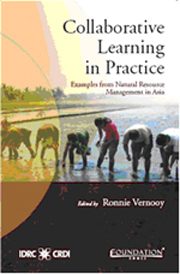Book contents
- Frontmatter
- Contents
- Foreword
- Acknowledgements
- Preface
- Chapter 1 Toward Centres of Excellence for CBNRM (Community-Based Natural Resource Management)
- Chapter 2 Participatory Research and Development in South Asia
- Chapter 3 Adaptive Learning: From Isang Bagsak to the ALL in CBNRM Programme
- Chapter 4 Mainstreaming CBNRM in Chinese Higher Education
- Chapter 5 Comparing the Case Studies
- References
- Notes on Contributors
- Index
Foreword
Published online by Cambridge University Press: 26 October 2011
- Frontmatter
- Contents
- Foreword
- Acknowledgements
- Preface
- Chapter 1 Toward Centres of Excellence for CBNRM (Community-Based Natural Resource Management)
- Chapter 2 Participatory Research and Development in South Asia
- Chapter 3 Adaptive Learning: From Isang Bagsak to the ALL in CBNRM Programme
- Chapter 4 Mainstreaming CBNRM in Chinese Higher Education
- Chapter 5 Comparing the Case Studies
- References
- Notes on Contributors
- Index
Summary
In 1970, I completed my dissertation with Everett Rogers, the father of Diffusion of Innovations research. At that time, innovation unquestionably seemed to be an “idea perceived as new” that came from outside a community of farmers, doctors, housewives, or other entrepreneurs. It started to affect the community when some of its members adopted the new idea, which eventually led to more-or-less pervasive diffusion.
Economists observed that such change at the individual level has macro effects when new practices begin to affect total supply and start to drive down prices of farm commodities, to sight an example. Then, further, diffusion becomes a matter of surviving in the market place. Such induced innovation came to be understood as an essential aspect of the development “rat race” and the motor of economic growth. All this was no theoretical pie in the sky. Literally, thousands of empirical studies backed this perspective on innovation. At one time, Diffusion of Innovations was the most popular social science research topic ever. Diffusion research diffused with a vengeance.
This understanding of innovation at the level of the firm and its macro economic implications has had, and still has, tremendous impact on practice. Many leading agricultural scientists believe that agricultural development is a question of developing technologies and pushing them out to farmers. Ultimately, agricultural development conveniently is a question of funding scientists.
- Type
- Chapter
- Information
- Collaborative Learning in PracticeExamples from Natural Resource Management in Asia, pp. iv - viiPublisher: Foundation BooksPrint publication year: 2009
- 1
- Cited by



